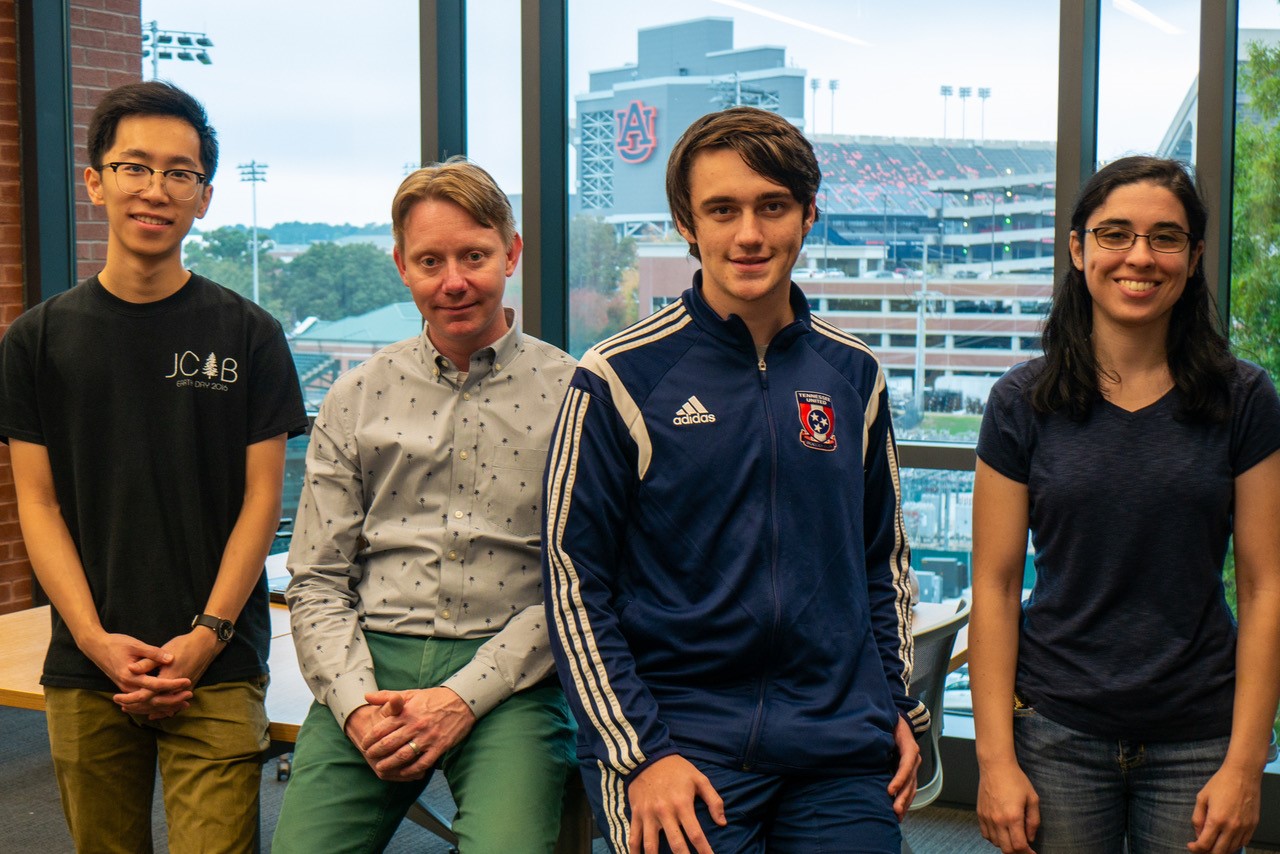COSAM News Articles 2019 November Engineering a Virtual Experience for Auburn University Students Taking Astronomy
Engineering a Virtual Experience for Auburn University Students Taking Astronomy
In an astronomy class, you might see stars and planets in textbooks or through video clips.
You might get lucky and be able to use a telescope on a perfect night where you can view everything for yourself.
However, at Auburn University undergraduate students are elevating the Auburn experience and helping the next generation participate in their astronomy elective like never before.
Students will see thousands of stars from the exact viewpoint of Auburn on any given day as though it was a perfect night.
Students will learn about different phenomenon such as planetary retrograde motion where planets appear to move backwards in seconds instead of viewing it over months.
Students will be able to instantly view galaxies, star clusters, and constellations at any time of the year, and even into the next century.
The Department of Physics worked with students from the Department of Computer Science and Software Engineering in the Samuel Ginn College of Engineering on this one-semester capstone project for their software engineering class to develop a planetarium app. Since no app for virtual reality headsets could support this idea, the students knew they had to design something that would work with the virtual handsets and include an interface for the controllers.
The four students, Preston Abraham, Sumin Beasley, Jerry Hu, and Alex Piff, spent more than 110 hours of collaborative work so far to build this tool.
These students worked directly with Dr. Dennis Bodewits and Dr. Melissa Halford from the Department of Physics in the College of Sciences and Mathematics (COSAM) to understand how students could have a customized app just for their astronomy class.
“Dr. Bodewits is passionate about teaching his students and he inspired us to showcase the physics behind the stars that helped us translate the code into what students will see,” shared Jerry Hu. “I am proud to have had the opportunity to work with him on this project.”
The team of students had to first consider that this app will be used to train students to identify constellations and think about the perspective of what students need.
The team processed more than 100,000 stars in a database that also included objects of interest and data for planetary motion.
The app is built on the unity platform, a development tool that powers video games, supports virtual reality and offers controller input.
“My favorite part of this project was seeing it all come together,” shared Preston Abraham. “Students are going to really have an amazing time in their astronomy class using an app that we developed to making learning interactive for each student.”
Latest Headlines
-
07/09/2024
-
Summer Bridge Program celebrates 21 incoming Auburn students as they prepare for future STEM careers07/02/2024
-
07/02/2024
-
06/17/2024
-
06/07/2024

